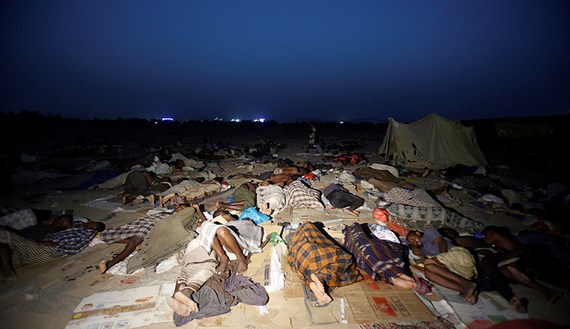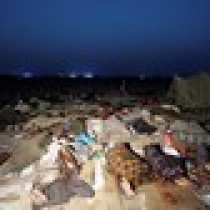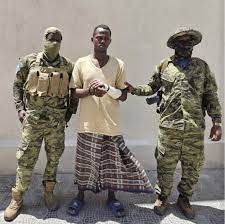
For some fleeing conflict, even Yemen is a haven

Thursday April 21, 2016
By Ahmed Alwly

The United Nations High Commissioner for Refugees(UNHCR)reportedJan. 19that around 92,000 people reached Yemen’s shores by boat in 2015. It said thenumber is one of the highest annual totals recorded over the past decade, and two-thirds of these immigrants reached Yemen since March 2015, when the conflict began.
Yemen is the only country on the Arabian Peninsula that is astate partyto the 1951 UN Refugee Convention and its 1967 Protocol.The convention,signed by 139 countries, is designed to protect refugees, provide them with aid and reinstate their social rights.
Yemeni President Abed Rabbo Mansour Hadi said in 2013 that there were close to 2 million foreign refugees living in Yemen.Back then, Yemen was hosting hundreds of Syrian refugees fleeing the war ravaging their country, but the number Hadi mentioned seemedexaggerated and inaccurate.
Yemen is a miserableand doomed "escape" for those who fled conflicts and suffering in their homeland to save their lives. When immigrants, mostly from Somalia, reachthe west coast of Yemen, they are hosted in theKharaz refugee camp, which is about1,500 squaremeters (roughly one-third acre) in sizeandabout 136kilometers (84miles) from Aden.Thecamp was established in 2000 in a secluded and harsh placewhere temperatures in the summer can reach 50º C (122ºF).
The UNHCR receives the refugees, records their data and gives them identity cards to protect themfrom being forcibly deported to their country of origin. Yetmany refugees overlookthis protocol and headtowardAden or Sanaa with no identity papers, making yet another harsh and expensive trip.
Said Wael Mohamed Hassan, a human rights activist, livesin Lahij, the province where the Kharaz camp is located.Hetold Al-Monitor, "The camp consists of 83 residential units of 25 houses, each including a family or two.”
Most of the refugees in Kharazare Somalis; the camp hosts nearly17,000 refugeesfrom that country, which has been plagued by a civil war for almost two decades.
In her book titled"A Million Shillings,Escape from Somalia,” journalistAlixandra Fazzinanoted the Kharaz camp once was a military base. She described the camp's environment as hostile and unforgiving, and a far cry from the promised land many refugees risked their lives hoping to find.
One of the hundreds ofSomali refugeesliving in the Safia district in central Sanaatold Al-Monitor on condition of anonymity, "At the end of 2015, I went on a precarious journey to cross the sea to reach Yemen. I almost died three times at sea, when the boat, carrying about 40 people, was about to overturn. I said to myself: God, I do not want to die at sea. I prayed for this not to be the end.”
The UNHCR said on itswebsite, "Tragically, more people continue to lose their lives trying to cross the sea in overcrowded, unseaworthy boats.”
The Somali man added, "I thought that oncein Yemen I would have a fresh start, but I was mistaken. I have a miserable life, I did not find a joband I failed to [make it] into Saudi Arabiabecause of the war."
"But at least I'm still alive,” he added.
Many Africans view Yemen as a gateway to other parts of the Middle East, as it shares aborder with Saudi Arabia, which hosts millions of foreign workers. Immigrants with high hopes areshocked when they reachYemen and witness the ruin inflicted by itsdevastating civil war.
Despite the refugees' dire conditions, there are no Somali beggars in Sanaa, unlike the many poor Yemenis seen in the capital’s streets. Somali refugeesforge a living out of their perseverance. Most of the men wash cars for a maximum of $2 in popular markets, while women work in the homes and offices of affluent families. The womenserve drinks and clean officesfor $200 a month in the best-case scenarios.
Somalirefugee Othman Omar told Al-Monitor he has spent 20 of his 29 years in Sanaa. "I have not received any financial aid or in-kind allowance from any international organization. I have been washing cars to provide for my family.”
Another refugeetold Al-Monitor on condition of anonymity, "I received $300 a month from the UNHCR, but the amount was cut to $150.”
A third refugee said, "I only get $100, which is not enough in light of the high food prices.”
These refugees were sitting in the shadeon the sidewalk inSanaa, withold pieces of cloth on their shouldersandbuckets of soapy water, waiting for a driver to give them the sign to wash his car.
In addition to the harsh living conditions, the refugeesare at high risk. Omar told Al-Monitor, "The Houthimilitants, who control Sanaa, areforcing usto fight in their ranks, against their opponents.”
He added, "They took 30 Somalisto fight in their ranks. I even know some of them. Why have we fled our country to Yemen? Had I wanted to fight, I would have stayed in Somalia. We have fled death. Now, we fear that they willforce us to join the Yemeni war.”
The number of immigrants inSanaa, Aden and Lahij is unknown. Al-Monitor was unable to secure any figuresfrom the UNHCR offices in Sanaa and Aden.
It seems refugees fromwar-torn nations throughoutthe region are unwittingly exchanging one wretchedexistence for another.In the struggle to survive, more than 173,000 Yemenis have fled to neighboring countries since March 2015to escape the war, including51,000 to Oman, 40,000 to Saudi Arabia, 33,000 to Djibouti, 32,000 to Somalia, 11,000 to Ethiopia and 6,000 to Sudan.
Yemeni refugees in Somalia, Djibouti andEritrea are livingmiserable lives. They rely heavily onUNHCR aidin theabsence of the Yemeni government, which wasexiled toRiyadh.
In a May 18, 2015 story, theLos Angeles Timesdescribed Yemeni refugees as surviving"in a rudimentary camp in Djibouti on a remote coastal stretch where shelter from a punishing sun is scarce and the shrieks of hyenas and jackals echo in the evenings.”



 0
0 














For some fleeing conflict, even Yemen is a haven
SANAA, Yemen — One of the most striking paradoxes generated by war and migration in the Middle East is that thewar in Yemen, raging since the spring of 2015, has not scared off boats packed with African immigrants heading towardthis impoverishe